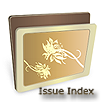The Age of Interruption
Technology in Education Column
by Dr Sandra Bassendowski
The Technology in Education column is written by one of our CNA Centennial 100 Award Winners, Dr. Sandra Bassendowski, who is a Professor at the University of Saskatchewan. Sandra recognized a need, and offered to write this important feature for the CJNI – this column is focused on how technology can be used in nursing education and by nurses in general. Sandra has been recognized by the Canadian Nurses’ Association, as well as the Saskatchewan Registered Nurses Association and the University of Saskatchewan for her inspiring, dedicated work in her educational practice.
COLUMN
According to Rose (2010), we have moved from the Age of Information to the Age of Interruption. She discusses the Age of Interruption in relation to the newer generations that have an over abundance of information along with a general attitude of inattention. “In modern times, hurry, bustle, and agitation have become a regular way of life for many people—so much so that we have embraced a word to describe our efforts to respond to the many pressing demands on our time: multitasking” (Rosen, 2008, ¶2). Many of us have developed the skill of eating a sandwich, talking on the phone, watching TV, and checking on the whereabouts of our small children all at one time but more recent research on multitasking refers to the impact of technology and the concept of media multitasking. It is defined as the use of more than one media activity at one time and as you look around, you will see teenagers who are constantly switching between instant messaging (IM), music, Facebook, videos, and a newly released video game on their handheld devices.

Age of Interruption
The research in media multitasking is in its early states and suggests, “A long-term exposure to media multitasking is expected to produce both positive and negative outcomes on cognitive, emotional, and social development” (Lin, 2009, Media as Extensions, ¶4). The nonlinear and hyperlinked structure of information on the Web may have the potential to promote learning and creativity (Lin). Weinberger (2008) suggests that individuals exposed to a concept from a variety of decentralized sources may gain deeper and more complex understandings. Conversely, Poldrack (2006) found that multitasking adversely affected how people learn and how they retrieved and retained information. Rose (2010) believes that educators must pay attention to this phenomenon as “…learning cannot take place unless the learner is intellectually engaged, present in more than just body” (p.42).
The idea of continuous partial attention has implications for educators regarding both classroom and online environments. I believe that we need to use technology to help students find ways to focus on the required content in our classrooms, labs, and clinical. Maybe, it means taking time throughout a class to ask students to pause, to reflect, and find direction. Teachers, in the past, used to ask students to put down their pencils and pay attention at given times throughout a class- maybe we need to ask students to put down their devices and take a pause that refreshes! What are your thoughts about instructional strategies that might work in this Age of Interruption?
References
Lin, L. (2009). Breadth-biased versus focused cognitive control in media multitasking behaviors. Proceedings of the National Academy of Sciences. doi: 10.1073
Rose, E. (2010, July-August). Continuous partial attention: Reconsidering the role of online learning in the Age of Interruption. Educational Technology, 41-46.
Rosen, S. (2008). The myth of multitasking. The New Atlantis, 20, 105-110. Available: http://www.thenewatlantis.com/publications/the-myth-of-multitasking
Weinberger, D. (2008). Everything is miscellaneous: The power of the new digital disorder. New York: Holt Paperbacks.
Photo: Image ID: 9286574
Purchased from 123rf site







